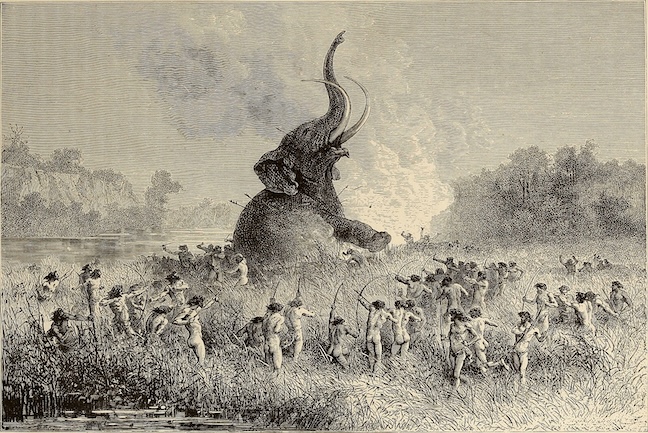The Paleolithic era, characterized by the dawn of humanity and the emergence of tool-making, holds countless mysteries waiting to be unveiled. Among these enigmas lies the question of why early humans repeatedly returned to specific locations for stone quarrying and tool-making activities. Recent research led by Tel Aviv University archaeologists sheds light on this phenomenon, revealing a profound connection between ancient humans, elephants, and the landscapes they inhabited. Through meticulous analysis and interdisciplinary investigation, the researchers unravel the intricate relationship between Paleolithic communities, their prey, and the geological resources they depended upon.
The Significance of Stone: In the ancient world, stone held paramount importance for early humans. As the primary material for crafting tools, stone provided essential resources for hunting, butchering, and survival. Across the Paleolithic landscape, quarrying sites emerged as focal points of human activity, drawing generations of ancient hunters to their rocky outcrops. Yet, the question remained: What made these particular sites so special, attracting human attention for hundreds of thousands of years?
The Elephant Connection: Drawing upon interdisciplinary insights and extensive fieldwork, the researchers uncovered a remarkable correlation between Paleolithic quarrying sites and the migration routes of elephants. Elephants, as the primary dietary component for early humans, roamed the landscape in search of water sources, leaving behind distinct pathways etched into the earth. These ancient giants, consuming vast quantities of water daily, shaped the landscapes they traversed, influencing both the environment and human behavior.
Mapping the Landscape: Through meticulous cross-referencing of archaeological data and elephant migration routes, the researchers identified a striking pattern: Paleolithic quarrying sites were strategically positioned along the paths of elephant migration. These sites, nestled within walking distance of water sources, became hubs of human activity, serving as crucial waypoints for stone tool production. As elephants followed predictable routes dictated by their need for water, ancient hunters capitalized on these movements, establishing hunting and butchering sites in close proximity to quarrying locations.
The Ritual of Quarrying: Intriguingly, the researchers noted a cultural significance attached to quarrying sites, transcending mere practicality. Drawing parallels with indigenous traditions, where sacred sites are imbued with spiritual importance, the Paleolithic quarrying sites took on a similar reverence. Across generations, humans returned to these sites, leaving offerings and inscribing their presence upon the landscape. It was a tradition steeped in ritual and reverence, reflecting humanity’s deep connection to the natural world.
A Global Phenomenon: Expanding their investigation beyond the confines of Israel, the researchers applied their model to Paleolithic sites across continents. From Asia to Europe and Africa, a universal pattern emerged: Wherever water flowed, elephants roamed, and humans quarried stone. This “holy trinity” of Paleolithic existence transcended geographical boundaries, shaping human behavior and cultural practices on a global scale.
Legacy of the Megaherbivores: As the researchers reflect on their findings, they acknowledge the profound impact of megaherbivores on Paleolithic landscapes. Elephants, mammoths, and other ancient giants shaped the environments they inhabited, influencing human migration patterns, resource utilization, and cultural practices. Ultimately, the extinction of these megaherbivores marked a turning point in human history, heralding a new era defined by changing landscapes and evolving lifestyles.
The research conducted by Tel Aviv University archaeologists offers a compelling glimpse into the complex interplay between ancient humans, megaherbivores, and the landscapes they shared. Through meticulous investigation and interdisciplinary collaboration, the researchers have illuminated a fundamental aspect of Paleolithic existence: the intimate relationship between quarrying sites, elephant migration routes, and human survival strategies. As we continue to unravel the mysteries of our prehistoric past, each discovery brings us closer to understanding the rich tapestry of human experience woven across millennia.
